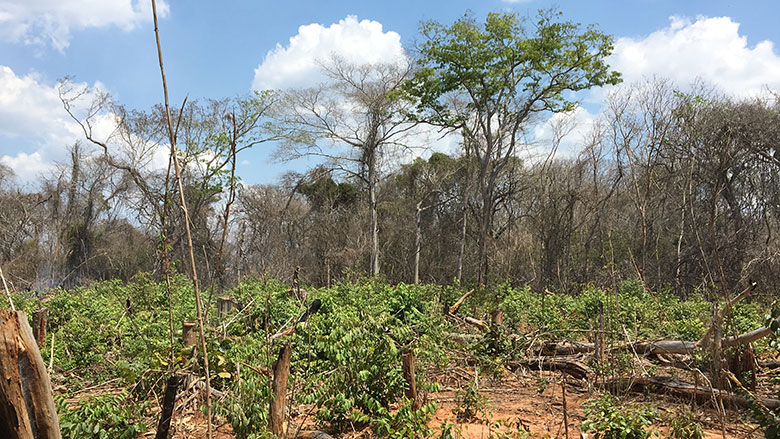MAPUTO, November 10, 2016 – Local leader Felismino Manhica now knows how to identify priority areas for restoration the Mecuburi District where he lives. He can develop a short list of restoration interventions, and define goals and the scope of restoration work. Most importantly, with this knowledge, he can help his rural community restore degraded land, regaining its ecological integrity and enhancing their lives.
“We want the Mecuburi Forest Reserve to be green again, to produce water and other environmental services for our livelihoods – as it used to be at the time of our forefathers.” Manhica said.
Manhica is one of 40 community leaders who recently completed a three-day training on Restoration Opportunities Assessment Methodology, or ROAM, a cost-effective and easy process for identifying restoration opportunities, and selecting feasible interventions. Designed by the International Union for Conservation of Nature (IUCN) and the World Resources Institute, the training marked the kickoff of the country’s ROAM pilot project as part of their integrated management approach to promote rural development.
Supported by the World Bank, the training was led by IUCN, the University of São Paulo’s Laboratório de Ecologia e Restauração (LERF/USP) and Bioflora, a Brazilian environmental enterprise.
“The restoration of degraded land is a world priority in the struggle against climate change,” said Andre Aquino, World Bank senior natural resources specialist. “As such, it is crucial to the survival of generations to come.”
In Mozambique, severe degradation of natural resources reduces the country’s potential for productive agriculture and decreases local and global environmental services, such as habitat for wildlife and carbon storage. Through ROAM, communities, government and civil society can now work together to restore ecological functions of a landscape; such as food production, regulation of water flows to downstream users, while creating biological corridors, particularly through the re-establishment of riparian forests and connection of forest fragments.
Thanks to ROAM’s accessibility online and its affordability, the tool has quickly gained global relevance. The tool can help reach countries reach the ambitious global goal to restore 150 million hectares of degraded or deforested land across the planet by 2020.
In Mozambique, the ROAM pilot has helped local stakeholders to identify priority areas for restoration, and to draft models for implementation that can be tested under theAgriculture and Natural Resources Landscape Management Project and other World Bank-funded initiatives in the Cabo Delgado, Nampula and Zambezia landscapes. These areas are part of the integrated landscape management program, which is being supported through several WB-financed projects, including the Mozambique Conservation for Development Project (MozBio), the REDD+ readiness process. and the Mozambique Forest Investment Project (under preparation).
“We were impressed with the engagement of the communities and local government of Mecuburi in this spatial planning exercise,” said Ricard Rodrigues, who led the ROAM training. “Their everyday lives are heavily impacted by land degradation and forest loss and they are anxious to get engaged in restoration efforts.”
Various implementation models address different restoration objectives and needs of particular areas. As such, they can range from helping to increase the productivity and sustainability of production areas to discouraging illegal logging and fires in protected areas to reintroducing native species that are on the brink of disappearing.
Many of the models combine planting of native species and exotic fruit trees with agricultural crops (corn, cotton, rice, banana), including species that provide timber, fuelwood and organic matter for soil fertilization. Additional focus areas include:
- Agriculture Areas – focus on increasing productivity and soil protection
- Springs, Water Recharge Areas, and River Banks – focus on protection
- Degraded Areas intended for conversion into Machamba - focus on agricultural production
- Machamba (farm) Areas inside the Forest Reserve – focus on environmental conservation and gradual shading of agricultural areas
- Degraded Forest Restoration in the Reserve – focus on environmental conservation
- Maintain and Jmprove Conserved Forests – focus on environmental conservation

